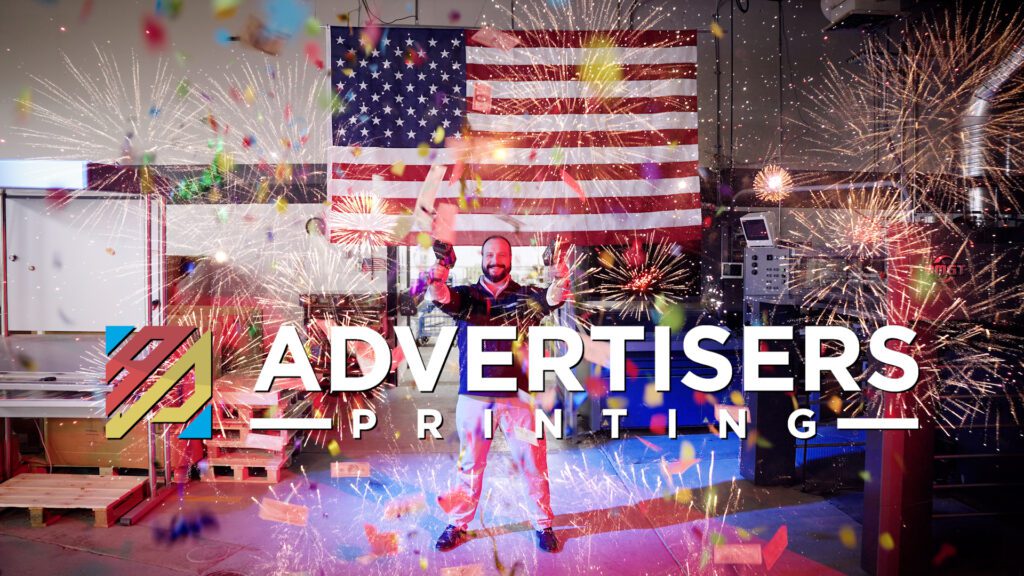Every designer knows that each piece contains an equal amount of blood, sweat, and tears. Designs don’t come easy, regardless of their simplicity—you spend time contemplating them and testing a few options before you even come close to the finished product. And with all this hard work in place, the last thing you need is to discover that the printed version of your design falls flat. How could this be?
The reality is that graphic design printing to match its digital original is no easy feat. It requires the digital version to be created in a certain format, as well as finding a printer who understands the limitations of the printing process.
If you plan to print your design, you need to consider a few things before you even begin the creative process. A design made for solely digital purposes will be created in a different way than one meant for print. If your design isn’t printing the way you hoped it would, consider the design elements below to ensure that your design prints in the picture-perfect format you desire.
Print Resolution
Simply by the nature of how digital works, your design may look fantastic on your screen regardless of the resolution. Unfortunately, this is not the same for print, and it’s important to use the highest print resolution possible when printing your graphic design. For print, you need to make sure you are using the correct dots per inch, or DPI. This process basically tells the printer how many dots to create per square inch of paper.
Setting your resolution to 300 DPI is usually the standard to ensure a high-quality printed product. You should consult with your printer to see if they recommend another resolution, but 300 DPI will most likely get you where you need to be.
Print Colors
When creating digital designs, you’re likely using the RGB color system. This provides a broad range of colors to choose from; however, printers use the CMYK system. You must set your print color preferences to CMYK before beginning your design—that way, you’re not scrambling to match colors once you realize the RGB ones you used aren’t supported by the printer.
At Advertisers Printing, we’re able to help troubleshoot any color issues you may have. Simply put, print vs. digital can sometimes look different even when using the exact same color. You may have liked the dark hue of the blue on your computer screen, but it doesn’t come out exactly right on paper. To help ease this process, our printers can provide print examples to help match the print colors of your intended design to make sure all colors are accurate once printed.
Print Bleed
Each printing system will have its own requirements for the print bleed size of your design. It’s crucial that you begin your design with the correct bleed built into your file. Typically, having ⅛” of your image extend beyond the trim will do it. Your software should have bleed settings built-in to help if you’re unsure of where to start.
Print Scale
On your computer screen, it can be easy to create a design on a small scale and forget how much bigger it will turn out when printed. In whatever program you use, you want to be sure your original file size is large enough to fit the finished printed format. For example, creating a billboard image is a huge task, no pun intended. The design needs to reflect the final print scale so your image doesn’t become grossly pixelated when it gets printed.
This advice also applies to smaller formats. Business cards are small and require lots of information. You want to make sure your fonts are not too thin or light in color but also fit the size of the card. This is where scaling the image digitally helps you know whether your font is readable and your designs look detailed enough in a small format.
Final Thoughts
One particularly crucial aspect of designing comes just before printing—proofreading! You never want to send in a design with type errors. At best, you’ll have to make corrections and go through another round of proofing. At worst, the mistakes are not caught and you either look bad or the job has to be reprinted. Printers may be able to help you proofread your work, but that could come with an extra cost. Making sure your design is perfect, text and all, saves you time and money in the long run, especially if your printer uses automation in production. Automation results in significantly reduced costs and time to produce but absolutely depends on a print-ready file. Contact Advertisers Printing, a St. Louis Printing company today to learn more about the different aspects of printing graphic designs, and how Advertisers Printers experts can help you get the right picture the first time.

